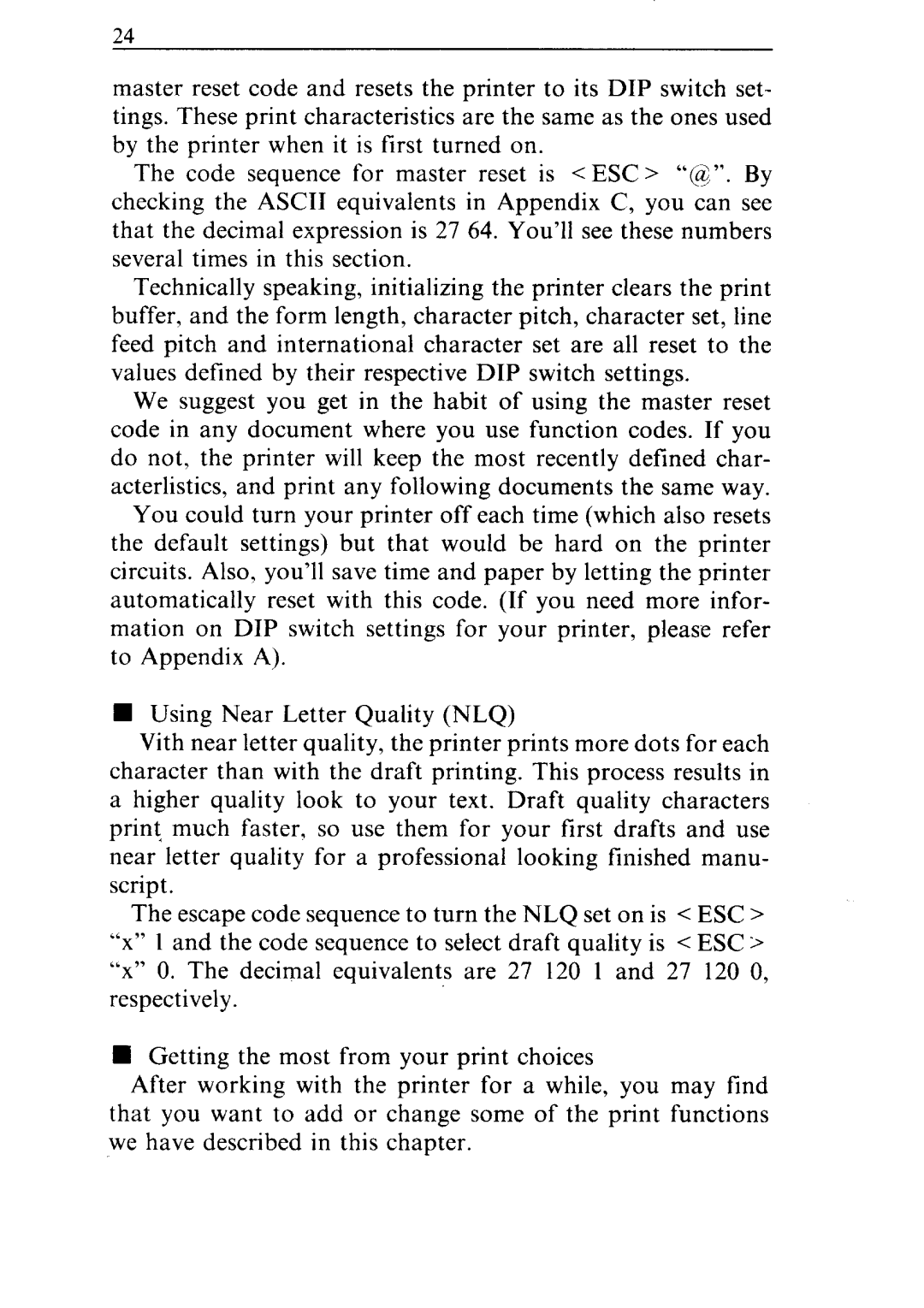
24
master reset code and resets the printer to its DIP switch set- tings. These print characteristics are the same as the ones used by the printer when it is first turned on.
The code sequence for master reset is < ESC > “(4”. By checking the ASCII equivalents in Appendix C, you can see that the decimal expression is 27 64. You’ll see these numbers several times in this section.
Technically speaking, initializing the printer clears the print buffer, and the form length, character pitch, character set, line feed pitch and international character set are all reset to the values defined by their respective DIP switch settings.
We suggest you get in the habit of using the master reset code in any document where you use function codes. If you do not, the printer will keep the most recently defined char- acterlistics, and print any following documents the same way.
You could turn your printer off each time (which also resets the default settings) but that would be hard on the printer circuits. Also. you’ll save time and paper by letting the printer automatically reset with this code. (If you need more infor- mation on DIP switch settings for your printer, please refer to Appendix A).
nUsing Near Letter Quality (NLQ)
Vith near letter quality, the printer prints more dots for each character than with the draft printing. This process results in a higher quality look to your text. Draft quality characters print much faster, so use them for your first drafts and use near letter quality for a professional looking finished manu- script.
The escape code sequence to turn the NLQ set on is < ESC > “x” 1 and the code sequence to select draft quality is < ESC > ‘&x7’0. The decimal equivalents are 27 120 1 and 27 120 0, respectively.
H Getting the most from your print choices
After working with the printer for a while, you may find that you want to add or change some of the print functions we have described in this chapter.
